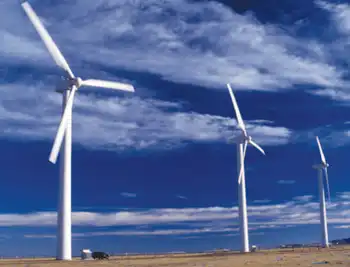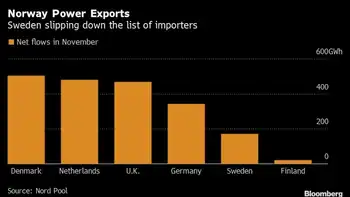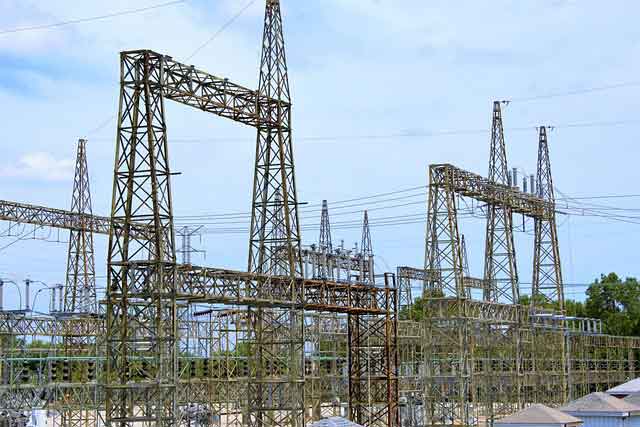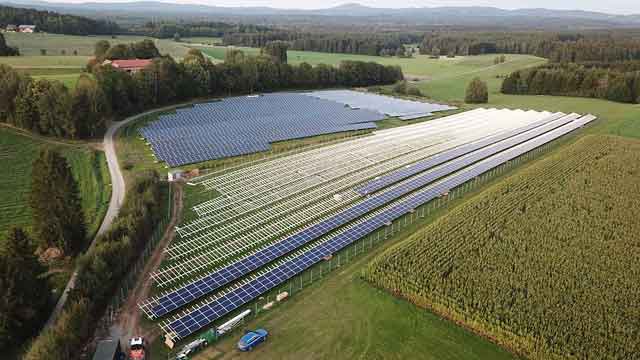Hydrogen will kick in when turbines stop turning
By The Scotsman
Electrical Testing & Commissioning of Power Systems
Our customized live online or in‑person group training can be delivered to your staff at your location.

- Live Online
- 12 hours Instructor-led
- Group Training Available
However, a renewables firm believes it has hit on a solution, and is hoping to use it in Scotland.
A hydrogen plant would store energy from the wind farm, creating a reserve that could be dipped into on demand, so that even when the wind was not blowing, an electricity supply would be available.
WHL Energy hopes to use the technology for the first time in the UK in North Ayrshire.
The Australian company has lodged planning applications for a wind farm and hydrogen plant, known jointly as the Ladymoor Renewable Energy Project.
The 48 megawatt, 24-turbine Wings Law wind farm near Kilbirnie would supply electricity, through the national grid, to the 10-metre high hydrogen plant a few miles away in Glengarnock, called a "hydrogen balancing facility".
This electricity would be used to electrolyse water into hydrogen and oxygen.
The hydrogen would then be liquefied, or stored under pressure. When needed it would be regenerated as electricity to be supplied to the national grid on demand.
Steven Radford, UK managing director of WHL Energy, which has a patent for the technology in the UK, said: "The system is very simple.
"It involves taking the electricity to the hydrogen plant in order to create a 24-hour supply from the wind farm. This addresses the intermittency problem of wind farms.
"With a traditional system you always need fossil fuel back-up but this will create 24-hour supply from the wind farm.
" It takes away the need for the fossil fuel base load."
He said that as a side benefit, any excess electricity from the hydrogen plant could be used locally, for instance to power public transport.
Similar schemes have been built in Norway and Canada, but if the applications get the go-ahead, it will be the first time it has been tried in the UK.
As well as helping Scotland meet its targets of generating 50 per cent of electricity from renewable sources by 2020, the company believes the project will bring numerous advantages to the local area.
It predicts 25 jobs would be created and argues it could establish Kilbirnie as a world-leading centre of excellence in the use of hydrogen as an alternative fuel source.
The company is investing £60 million in the project and hopes a decision on the planning applications will be made in the next few months.
This week, the site of the planned project was visited by David O'Neill, leader of North Ayrshire Council and Secretary of State for Scotland Jim Murphy, who was positive about the scheme.
He said: "Our future prosperity will be based on a low-carbon, high-growth economy.
"It's essential that we innovate more and that's why I was interested to hear about the plans for the combined wind farm and hydrogen storage plant.
"Britain needs a mixed energy policy including clean coal, oil and gas, nuclear and renewables, and projects like this can make a real contribution in helping Scotland and the UK stay in the forefront of renewables innovation."
The plans have met with opposition from campaign group Save Your Regional Park (SYRP), which thinks the proposed sites in the Clyde Muirsheil Regional Park should be left free of development.
Sybil Simpson, vice-chairwoman of SYRP said: "The Save Your Regional Park campaign, organized by the Ladymoor Wind Factory Action Group, is not against wind farms, but we and our members, many of whom come from the area, passionately believe that regional parks and national parks must be protected from inappropriate industrial development including wind farms."
The campaign group criticized the company's suggestion that the wind farm and the hydrogen plant would be linked, with one supplying electricity to the other.
A spokeswoman said: "This hydrogen plant will use electricity directly from the grid and there is absolutely no way it can be linked to the wind farm."
Mr Radford responded by saying the "equivalent electricity" to that created by the wind farm was being supplied to the hydrogen plant, using the national grid.
SYRP also highlighted that the Advertising Standards Authority in June criticized a leaflet about the proposed Wings Law wind farm, distributed to households in the area by WHL Energy in 2007.
It ruled that the leaflet breached the Committee of Advertising Practice code on issues including truthfulness and environmental claims, and the firm was instructed not to repeat certain claims in the leaflet.
A spokesman for WHL Energy said: "We accepted that some of the wording hadn't been very clear, and we have updated it."











